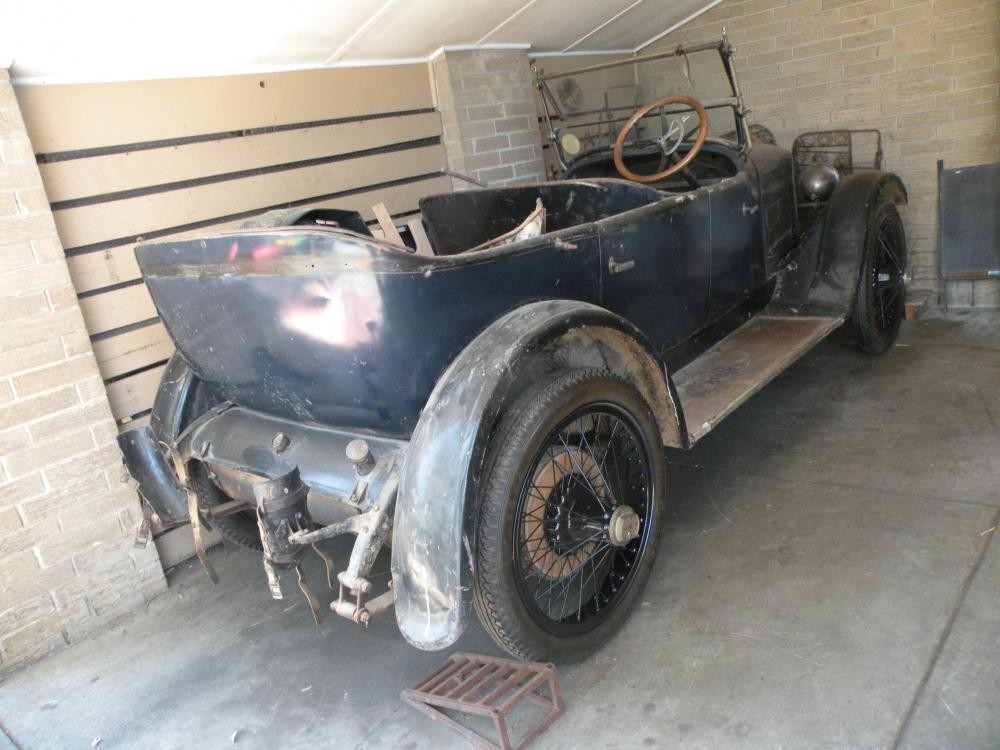You must be logged in to rate content!
11 minute(s) of a 173 minute read
11-18-2017
Moving right along as "they used to say", perhaps this should be titled how to fill in one of those spare hours on a Sunday morning. I have now recovered the errant corner of running board. This is an essential part of the cut out placed so that the enthusiastic owner of the 1920s could reach the oiler for the rear spring shackle pin with his trusty oil can. No doubt doing his weekly weekend schedule of maintenance on the Studebaker. The end of the running board had originally been slotted to take a strip of timber across the end to strenghten it where it bolted to the fender.
To replace this and so effect the repair I cut a 1/4 inch thick strip from an off cut of "Australian River Red Gum". This is an incredibly strong and virtually water proof timber. As the name implies it grows along the banks of some of our larger rivers i.e. the Murray River, in a similar manner to Willows. It virtually grows with its roots in the water. In the past it was a favourite timber for Australian house builders to use for foundation "stumps".
Having sanded it down to a nice "tap in" fit this was given a generous coating of water proof glue and carefully tapped into place. All that this will now require is re-drilling the fixing hole where the edge of the fender is attached. Once it is covered by some new linoleum no one will even know. Yes, I will be filling the old nail holes etc and will give the entire running board a final clean up with my sander. I do also have the original metal surounds that protect the timber edge to the "oiler access hole". No! I will not be nickel plating them. The one from the other side needs a minor repair and then they will be both painted black.
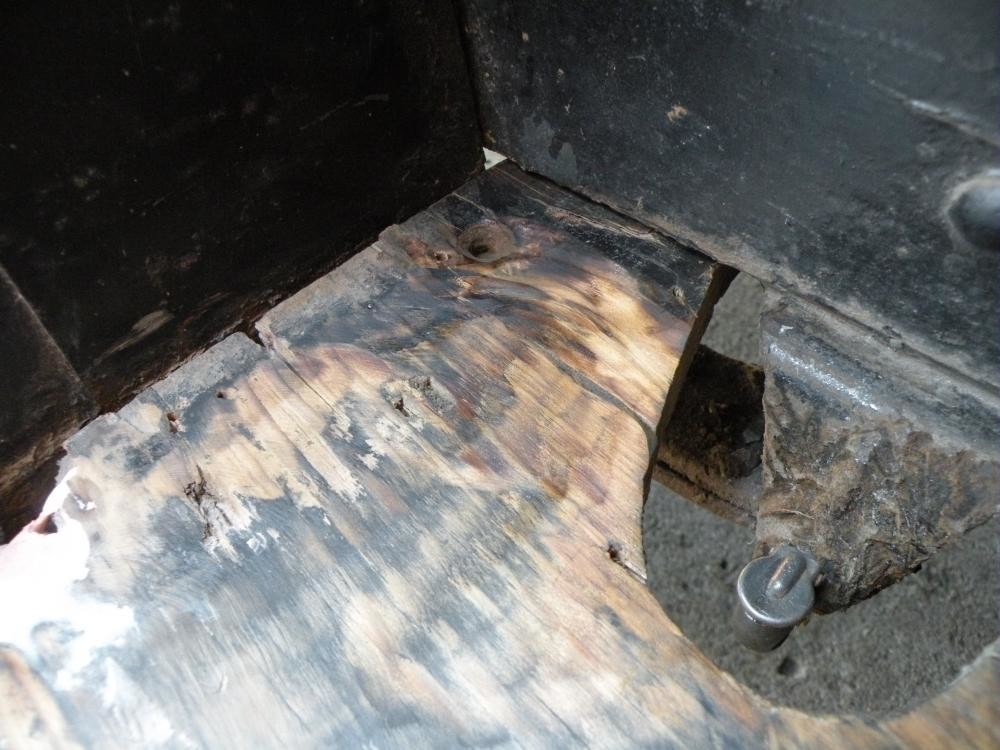
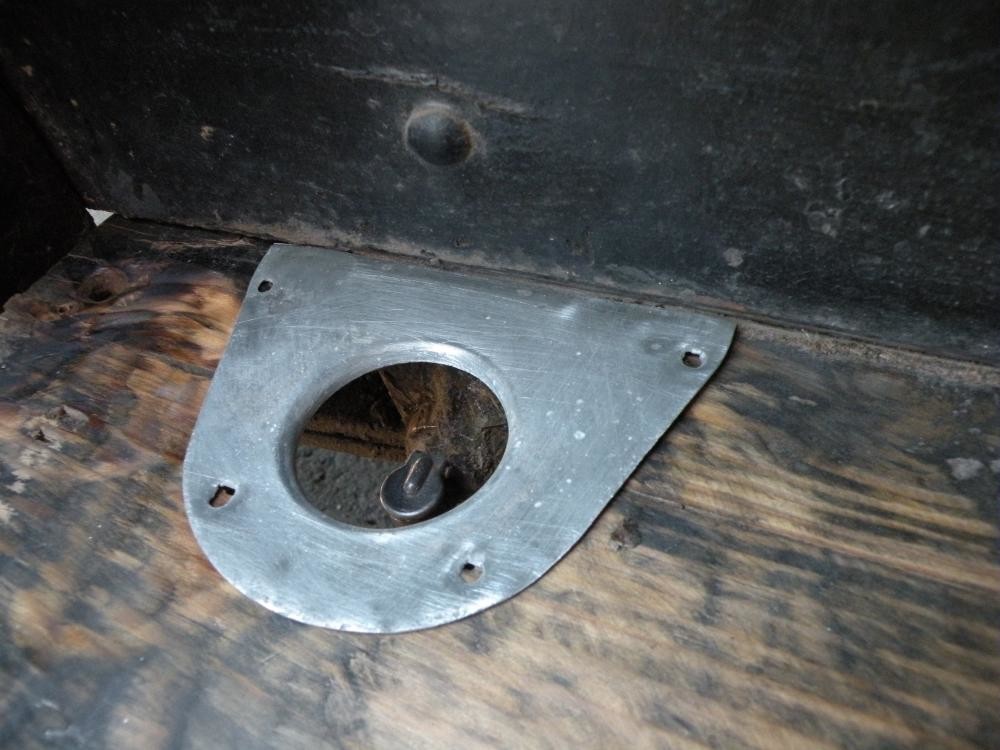
11-20-2017
Having cleaned and polished one of my "zinc" escutcheon plates I have decided that a nice coat of paint is just what the doctor ordered. This will happen only after I have decided on the most appropiate colour Linoleum to use as this will be carried through into the front foot-well. (toe boards, or what ever the official designation is) and will co-ordinate with the rear carpet. It may also have some influence on the colour and design for the "Lap rug". People with long memories may recall the "Faux Ocelot" lap rug especially made to fit in with the colour schene of the 1922 Packard Single Six Convertible Coupe.
forums.aaca.org+My+next+project+1922+Packard
To save you from all the effort of scrolling through a lot of pages of "waffle" I have lifted the relevant photograph for you. You however may like to look at another one of my "lost cause rescues".
Last I knew, the car was still in Australia but I have not actually heard anything of it since a week or two after I sold it.
I think from driving it a couple of times that it was potentially a really nice car. I hope that the present owner where-ever he or she is appreciate all the effort that went into it.
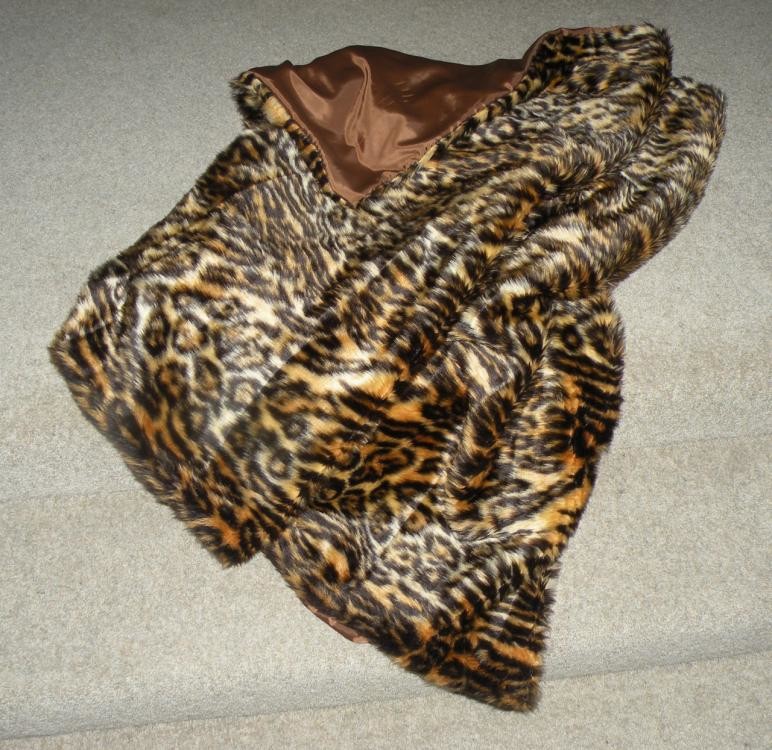
11-21-2017
Thank you for your p.m.
I have just returned fron a 250 mile round trip to rescue the TOP. Unfortunately it has been very badly stored for the past six years, so the fabric is all but falling apart. It is undoubtedly the original. At the sort of values you are suggesting, my only alternative is to fold it up as best I can and have a new "Bag/envelop" made to cover it up whilst it is attached to the rear of the car. At least the folding frame is intact. I certainly am not ready to sell the car right now but more than ever I will keep a close watch over the budget.
I have also received the repair "kit" from Jergens in the mail today so hopefully that will take me one step closer to having the motor running.
I am still waiting for the 24MM x1.5 Tap to arrive so I can attend to the stripped spark-plug thread.
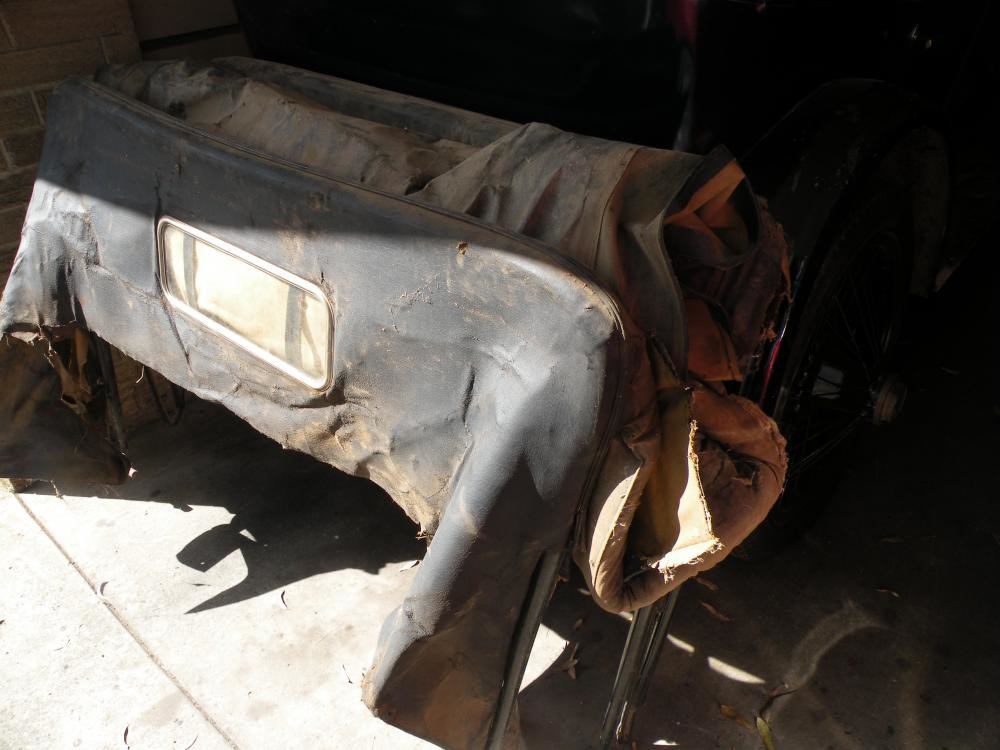
You are 100% correct Scott!
Even that it had been badly folded and stored, it is great to have it safely at home. What I had not realised is that there were TWO spare rear axles and rather rusty wire spoke wheels that go with it. Having driven up to Gooram in Helen's VW Jetta sedan there was just room for the top. Looking around "Lance's" place I doubt that they will be going anywhere. It is one of those farm-yards that is the last resting place for any number of cars, trucks and various other sizes and forms of motorised equipment.
The one big problem is that every time I meet a new person who has some, perhaps limited, knowledge of my Studebakers past life you get a different story. Apparently "Lance" or perhaps Mick as he prefers to be called, was employed to collect the car from Merrigum after the sale.
His story is that the car was stored in a very low, falling down, shed and that he had to take the top off the car in order to get it out. That the "farm" at Merrigum was much the same as his with derelict vehicles scattered about. That the Studebaker was probably in better condition than most of the other "vehicles". Not at all as I had been led to believe previously. That it had spent most if not all the time there with no attempt to do anything to get it running seems to be more and more likely. I must learn not to judge others by my own standards.I just wish I could find someone who can tell me about the car's history for the years between 1920 and the late 1960s-early 70s. It is an very big gap.
The rear window creates another mystery? As you describe it, the rear window makes it 1923 or later. Could it be a replacement or "borrowed" from another car? we may never know! The other problem is that to the vast majority of people it is just another old car and not really worth thinking about.
Turning the top over reveals a system of straps between to front and the main "bow" these would have been to support the side screens when not in use.
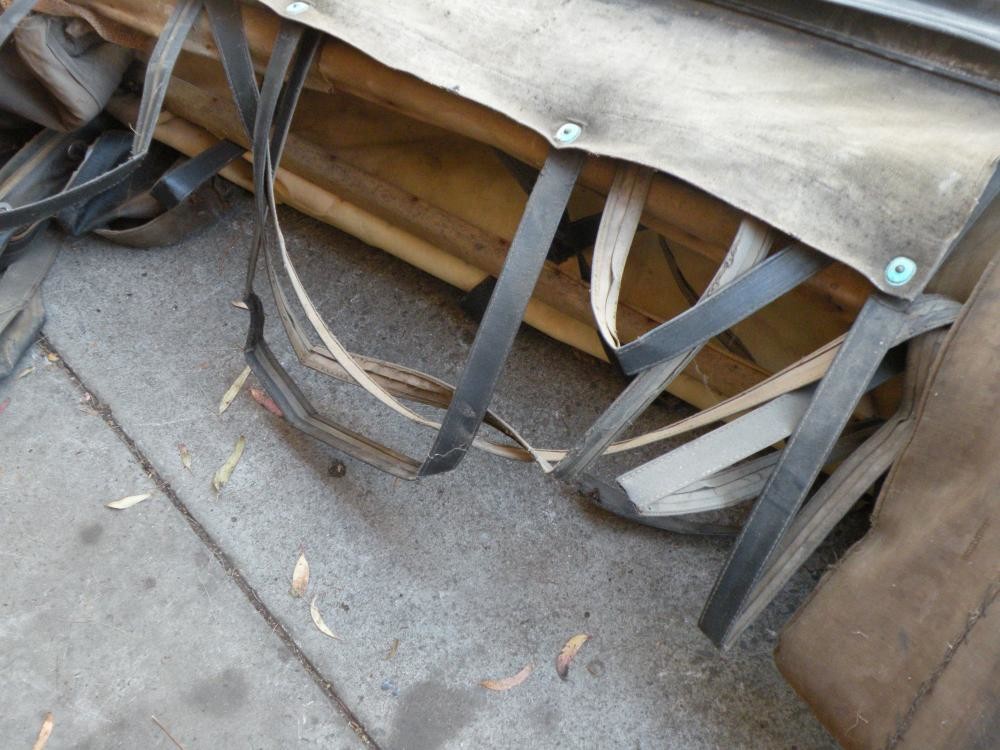
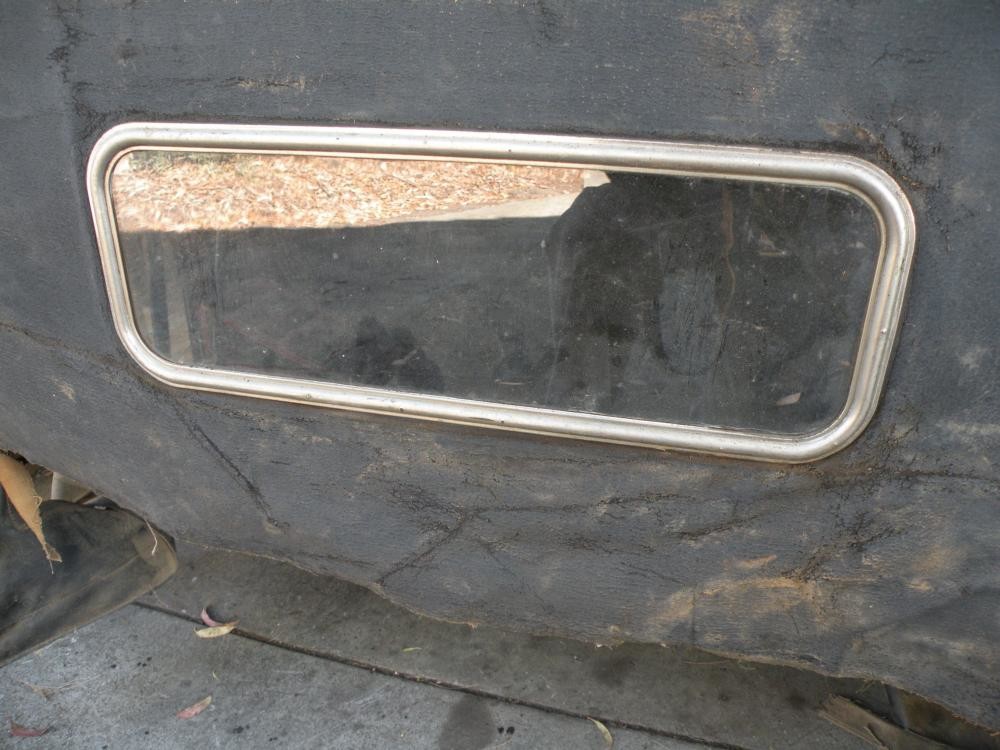
It was all a very long time ago and there seems to have been no set rule as to what came to Australia, often the dumping ground for experimental cars and one off options.
I tend to think that my Light Six was very possibly a "sample", right hand drive, car sent to an Australian Distributor to "test the market". This would explain such things as the nickel plated radiator surround, headlamp bodies and windscreen frame along with the "export" magneto ignition and wire spoke wheels.
In the distant past I had not one but two "very strange" 1928/9 Riley 9hp that were more "End of model" cars that incorporated parts from two or three previous years cars, no doubt cobbled together to be sent to the "Colonies".
11-22-2017
It is not a matter of agreeing or disagreeing. You have NEVER seen my car except in the photographs I have posted here. Some taken by me in the time I have owned the car, some given to me by the son and daughter of a previous owner who had the car from the late 1960s or early 1970s until 2012. Approximately 40 years without doing anything to or with the car. From what they have been able to tell me, when their father bought the car it had been "on blocks" since 1941/2. One or two phptographs were given to me by the Auctioneer who ran the Deceased Estate Clearing sale at Merrigum in 2012. I.E. another 30 years.
Kevin Gange bought the car in 2012, he brought it to Melbourne and placed it at the back of the Silver Top Taxi garage where I saw it 5 years later which brings us up to date and a total of 75 years "Off the Road". I am desperately trying to find someone who can tell me about the cars earliest history from 1920 to 1942. It's first 22 years presumably "on the road". I have not invented a "story" about the total of miles recorded on the speedo some 36,000 miles. I have just this week met "Lance" who collected the car from Merrigum and transported it to Melbourne.
Disregarding the above, you seem to have a problem understanding I am not a high pressure Dealer creating a sales pitch! I am an 81 year old ENTHUSIAST who has been involved with what I know as Vintage Cars (1918 - 1930) and what is known in Australia a PVTs. (Post Vintage Thorough-breds, 1931 - 1940) since I was a teenage school boy. That is for more than 65 years. I am a current member of the VSCC in the UK, I am a Hon Life Member of the(Lagonda) Rapier Register (UK) I am also a Past President and Hon Life Member of the VSCC of Australia. I have only recently joined the Historical Studebaker Register (Australia). In effect you know nothing about me or my car, so who are you to "disagree". If it offends you so, much, I will NOT post anymore information on this part of the Forum!
All I know about my Studebaker is what I have been able to discover talking to the friends and family of the previous owners.
The person I bought it from had bought it five years earlier at a Deceased Estate Clearing Sale. I have sopken with the daughter of the deceased man who could tell me that her father had bought it as a non-runner either in the late 1960s or early 1970s. She could tell me that her father had pulled it out of a fowl shed in Springvale, an outter suburb of Melbourne. The "Registration Lable" attached to the windscreen was in efect a receipt for the payment of that years Government Road Users Fee. (Road Tax) A new lable was issued every year. Legally you were not entitled to drive the car on the public roads without a current "label".The last such label that is still on my Studebaker was issued in 1941. At that time car owners took their car to their local Police Station and a Policeman removed the previous years "label" and placed the new one on the cars windscreen. I can remember going as a small boy with my father to pay the "Registration Fee" and have a new lable put onto this cars windscreen.
I may be 81 years old but I am certainly not an idiot and I attempt to be as honest in all my dealings as I possibly can be.
It is a well known FACT that cars sold in Australia were and still do differ, usually to some degree in specification and cosmetic detail, from cars made for the manufacturers "home market".
If you have not visited Australia you can have no conception of the geography of the country or the distances involved.
In addition to traveling extensively in the UK and Europe, I have visited the USA for a period of approximately six weeks and travelled up and down the East Coast by road, where ever possible avoiding the "Interstate Highways".
Thank You and Goodbye.
